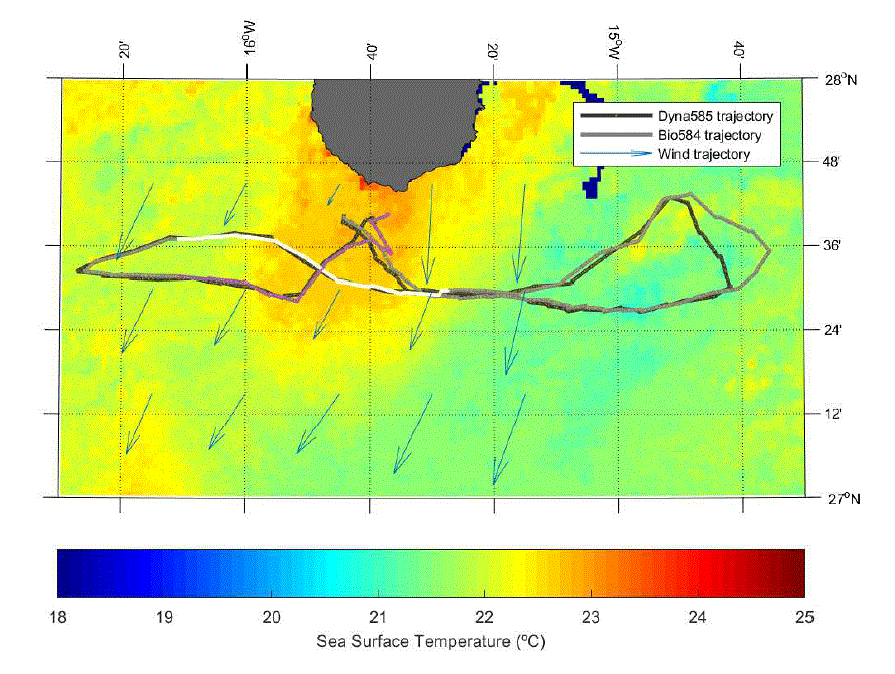Ph.D. Program in Oceanography and Global Change at the Canary Islands, Spain
The oceanographic environment of the Canary Islands is strongly influenced by mesoscale phenomena such as the eddies south of the islands, the upwelling filaments in the area closest to the African coast and the lee of the islands of greater relief. Gliders are autonomous underwater vehicles providing high-resolution hydrographic and biochemical measurements and they are useful to measure more accurately the structures of the environment of the Canary Islands.The study of the lee allows us to analyse a subsurface core in the temperature and density anomaly fields as well as the variability of the isotherms and isopycnal of 20 ºC and 1026 kgm-3 respectively.The core of the warm pool is delimited by a temperature anomaly greater than 1 ºC and a negative density anomaly of -0.2 kgm-3located between 50 and 100-150 m.The wind field south of Gran Canaria has a variable intensity between 4.9+-1.2 m s-1 in the area closest to the island and 10.1+-1.1 m s-1 in notaffected area by the orography of the island.




